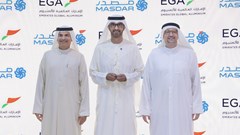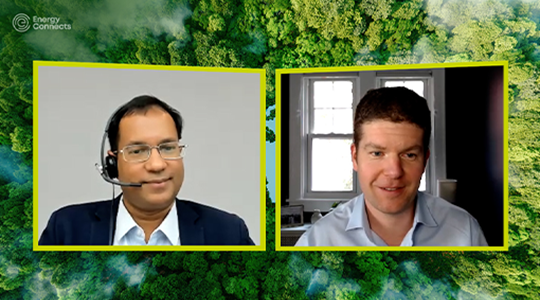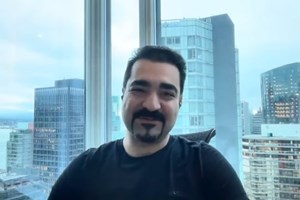Stellantis Joins Battle with Silicon Valley for Software Talent
(Bloomberg) --
This week I got to sit in a socially distanced conference room with Carlos Tavares, the CEO of Stellantis, who was in Detroit to talk about the carmaker’s software strategy.
In case you haven’t noticed, holding a “Software Day” is kind of a thing right now. Volkswagen had one, General Motors did, too. Like its cousin, the “EV Day,” the event is meant to buoy a carmaker’s stock price by convincing investors that, far from being a metal-bender destined for disruption, the incumbent company has staying power and is transforming itself to meet the moment.
Stellantis said it will achieve “tech industry margins” by selling software-enabled services to consumers and corporate vehicle fleets. “Vertical integration” of hardware and software will be key, executives said.
That means the automaker wants direct access to chips so it can write software for cool car features that will charm its customers and keep its brands alive amid the digital disruption — usage-based auto insurance, for example, or video games for passengers. If you live in a Jeep ad, that means platooning a bunch of electric Wranglers with your friends, while a drone flies overhead capturing your adventure.
Stellantis, formed early this year from the merger of Fiat Chrysler and PSA Group, is the world’s fourth-biggest automaker. It will make 400 million euros ($452 million) from connected cars this year. In five years, software services will bring in 4 billion euros – a 10x increase, executives said.
Whether or not Stellantis can pull this off is definitely TBD. But software days aren’t just about trying to dazzle investors and reporters. They also function as recruiting events for software engineers. During the hour-long presentation, Stellantis paused the show to highlight its new software talent. Its head of AI came from Nvidia and Tesla. The CTO, hired this summer, is a former head of Alexa Automotive for Amazon. “Stellantis is becoming a very attractive company for people who want to demonstrate their skills in terms of software, and we are receiving a significant number of resumes,” Tavares said.
To gauge the chances of success of Stellantis, or any legacy automaker, I talked to folks trying to envision what the future of the auto industry looks like. Some common themes emerged.
One: You need capital. The bigger you are, the more money you have to throw at this. That’s why jacking up that stock price is so helpful (see: Tesla, Rivian). Two of the biggest automakers in the world, Volkswagen and Toyota, have set up standalone companies to house their software efforts.
Attracting software engineers is one thing, but keeping them happy and pulling together their disparate talents for new projects is another, said Dietmar Ostermann, who leads the automotive advisory at PwC in Detroit.
“I think everybody will stumble a bit because this is new territory and this is new talent that clicks differently than the former automotive engineering community,” Ostermann said. Programming chips to control the engine and building a cloud to store autonomous driving data are pretty different.
Tavares is famous for finding profit where others have failed, and he’s currently pinching pennies to pay for all these new software engineers. But competing with the likes of Amazon or Microsoft makes it an uphill battle, just by virtue of those companies’ stock valuations.
Automakers “are finally now beginning to make the right moves to drive the stock price up to reposition themselves for the tech business,” said Ashok Divakaran, who leads connected and autonomous strategy at Deloitte. “The value proposition from a compensation standpoint is completely different.”
More stories like this are available on bloomberg.com
©2021 Bloomberg L.P.
KEEPING THE ENERGY INDUSTRY CONNECTED
Subscribe to our newsletter and get the best of Energy Connects directly to your inbox each week.
By subscribing, you agree to the processing of your personal data by dmg events as described in the Privacy Policy.
More renewables news

China’s Rapid Solar Growth Slows as Grid Seeks to Keep Pace
Apr 22, 2024
Europe Is Being Scorched and Flooded by Growing Climate Extremes
Apr 22, 2024
Biden Unveils Winners of $2 Billion in Green Tax Credits
Apr 19, 2024
Europe’s Demand for LNG Set to Peak in 2024 as Crisis Fades
Apr 19, 2024
Clean Hydrogen’s Best Bet May Be a Rainforest State in Borneo
Apr 18, 2024
PG&E, Edison, California Apply for $2 Billion US Grid Grant
Apr 18, 2024
China’s Solar Surge Is Making a Missing Power Data Problem Worse
Apr 18, 2024
First Solar Jumps After Report Says Biden to End Trade Loophole
Apr 17, 2024
Biden’s Climate Law Catalyzed Investment, But Projects Still Face Snags
Apr 17, 2024
Masdar and EGA form alliance on aluminium decarbonisation and renewables
Apr 17, 2024
Chevron helping drive Egypt’s journey to become Africa’s energy powerhouse
Mar 11, 2024
Energy Workforce helps bridge the gender gap in the industry
Mar 08, 2024
EGYPES Climatech champion on a mission to combat climate change
Mar 04, 2024
Fertiglobe’s sustainability journey
Feb 29, 2024
P&O Maritime Logistics pushing for greater decarbonisation
Feb 27, 2024
India’s energy sector presents lucrative opportunities for global companies
Jan 31, 2024
Oil India charts the course to ambitious energy growth
Jan 25, 2024
Maritime sector is stepping up to the challenges of decarbonisation
Jan 08, 2024
COP28: turning transition challenges into clean energy opportunities
Dec 08, 2023
Why 2030 is a pivotal year in the race to net zero
Oct 26, 2023Partner content

Ebara Elliott Energy offers a range of products for a sustainable energy economy

Essar outlines how its CBM contribution is bolstering for India’s energy landscape

Positioning petrochemicals market in the emerging circular economy

Navigating markets and creating significant regional opportunities with Spectrum
































